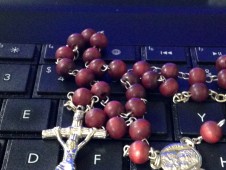Monday’s Writing Tips | Karen Kelly Boyce, Author and Inspirational Speaker
Two weeks ago we finished our personal editing, searched for a professional editor and with price in mind sent our manuscript to be professionally edited. As a proficient writer we paid for developmental, line editing and proofreading. What now? What do we do when that manuscript comes back marked up and full of comments.
I know that the first time I received an edited manuscript I was both lost and confused. Not being trained, I didn’t know what to do. Since most publishers and editors require word documents, most editors work online and use Microsoft word editing marks and comments. You will see words in pink brackets with comments written in the right column. A line will connect the comment to the shaded section that needs correction.
As you go page by page you can make the simple corrections. If there is a comment or correction you don’t understand, don’t be afraid to contact the editor. This is a back and forth process. Once you have made your correction just left click on the comment and you will see the choice to delete the comment. Everyone does their edits differently but I make the simple corrections (Spelling, Grammar, and Sentence restructuring) first. It cleans up the manuscript.
Then I address the serious flaws. Your editor will usually send you an overall impression of the work. They may tell you to simplify or expand the work or give hard core suggestions to improve the plot or flow of the story. They may even make suggestions about characters or dialog. Take these suggestions seriously. You don’t need to make all the changes but you do need to sincerely consider them. Your editor is trying to improve your work – so a publisher will like it!
Once I have considered the editor’s overall impression, I keep the suggestions in mind as I go through the manuscript again. If I agree, I try to make those changes.
I then go back to deal with the longer and more complicated comments that the editor left. I find that once the simple corrections are made I can concentrate on the editor’s ideas and find that most of them have merit. I may not make the exact change that the editor suggested, but they have pointed out a problem and I do address it.
Most writers dislike edits. I love them! Instead of looking at a comment as a criticism, I look at the editor’s comment as a challenge – a puzzle to solve. Since I am a writer I love spinning words and creating scenes and dialog. Why not enjoy the editing? Naturally as artists we tend to be sensitive and temperamental. That attitude doesn’t work well. Get over yourself and plunge into your edits with joy and gusto. Pray for insight and inspiration to perfect your work. It never hurts to thank your editor for all the hard work they have done.
After addressing all of the edits, I do a spell and grammar check. After all, I touched the manuscript and probably made more than one typo or mistake. Here are some common editing marks and symbols that I copied from Webster – Merriam:
PROOFREADERS’ MARKS
| Symbol | Meaning | Example | |||
| delete | |||||
| close up | |||||
| delete and close up | |||||
| caret | |||||
| insert a space | |||||
| space evenly | |||||
| let stand | |||||
| transpose | |||||
| used to separate two or more marks and often as a concluding stroke at the end of an insertion |
|||||
| set farther to the left | |||||
| set farther to the right | |||||
| set as ligature (such as ) | |||||
| align horizontally | |||||
| align vertically | |||||
| broken character | |||||
| indent or insert em quad space | |||||
| begin a new paragraph | |||||
| spell out | |||||
| set in CAPITALS | |||||
| set in SMALL CAPITALS | |||||
| set in lowercase | |||||
| set in italic | |||||
| set in roman | |||||
| set in boldface | |||||
| hyphen | multi-colored | ||||
| en dash | 1965–72 | ||||
| em (or long) dash | Now—at last!—we know. | ||||
| superscript or superior | |||||
| subscript or inferior | |||||
| centered | |||||
| comma | |||||
| apostrophe | |||||
| period | |||||
| semicolon | |||||
| colon | |||||
| quotation marks | |||||
| parentheses | |||||
| brackets | |||||
| query to author: has this been set as intended? |
|||||
| push down a work-up | |||||
| turn over an inverted letter | |||||
| wrong font | |||||

Thanks, Karen.
Please give a ballpark estimate of editorial costs. Does it run/page/1,000 words/ or correction?
God Bless,
Don